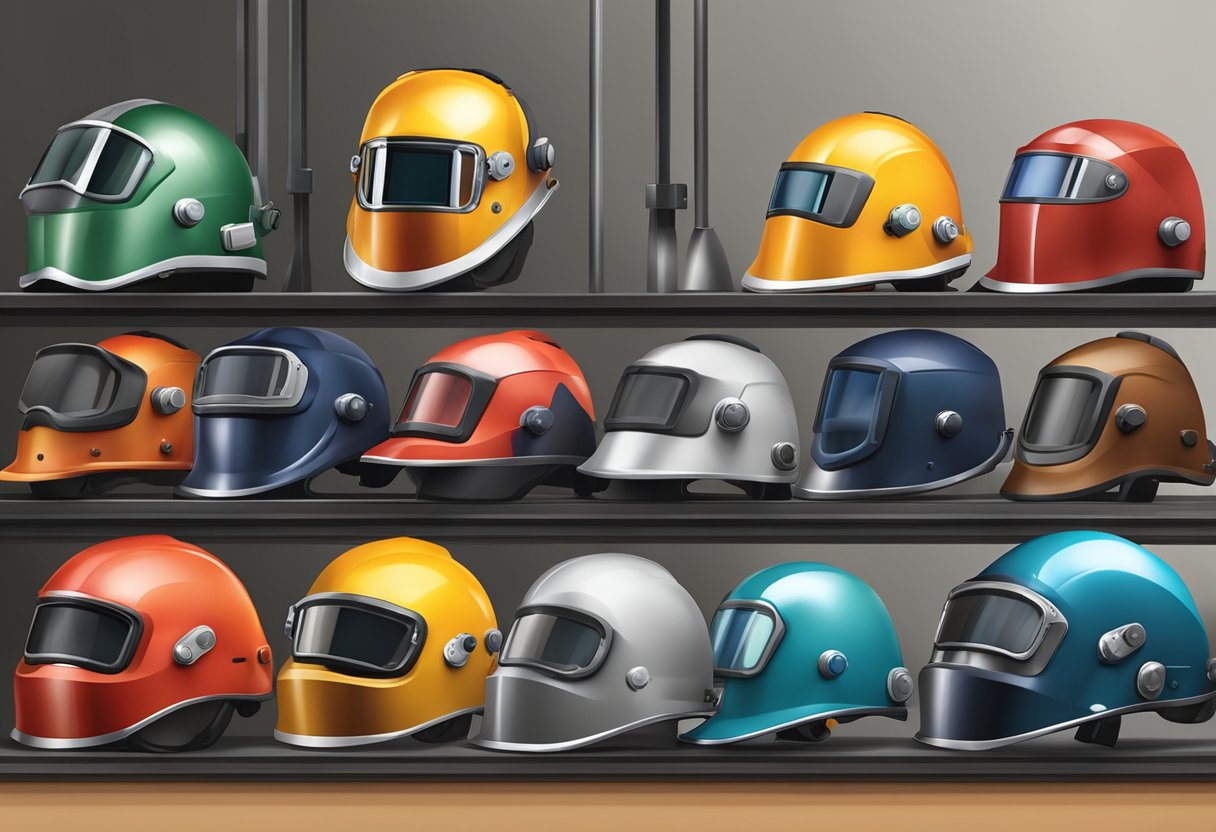Welding helmets, with their diverse options, are indispensable for welders. They shield against the extreme heat and light of welding, which can cause permanent damage to the neck, eyes, and skin. This article will provide an overview of the top welding helmets available, empowering you to make an informed choice. Gaining this knowledge will give you a sense of mastery over your job, increasing your productivity and safety.
Understanding Welding Helmets: Helmets come in various shapes, sizes, and styles. The two most common varieties are passive and auto-darkening. The fixed shade lens of a passive welding helmet shields the welder’s eyes from the intense light produced by the procedure. On the other hand, auto-darkening welding helmets, with their variable shade lens that automatically adjusts to the brightness of the welding arc, not only allow welders to see the workpiece clearly before and after welding but also enhance productivity and reduce eye strain, making your work more comfortable and efficient.
Top Welding Helmet Reviews Many top welding helmets are available on the market, each with unique features and technologies. Some popular welding helmets include the Lincoln Electric Viking 3350, the Miller Electric Digital Elite, and the ESAB Sentinel A50. These helmets are known for their exceptional optical clarity, comfort, and durability, making them ideal for professional welders. Click here for further information on our site, Ice Age Tools.
Key Takeaways
- Welding helmets are essential tools for welders. They protect against welding’s extreme heat and sunlight, which can irreversibly harm the skin, eyes, and neck.
- Passive and auto-darkening welding helmets are the two most common varieties.
- Some popular welding helmets include the Lincoln Electric Viking 3350, the Miller Electric Digital Elite, and the ESAB Sentinel A50.
Understanding Welding Helmets
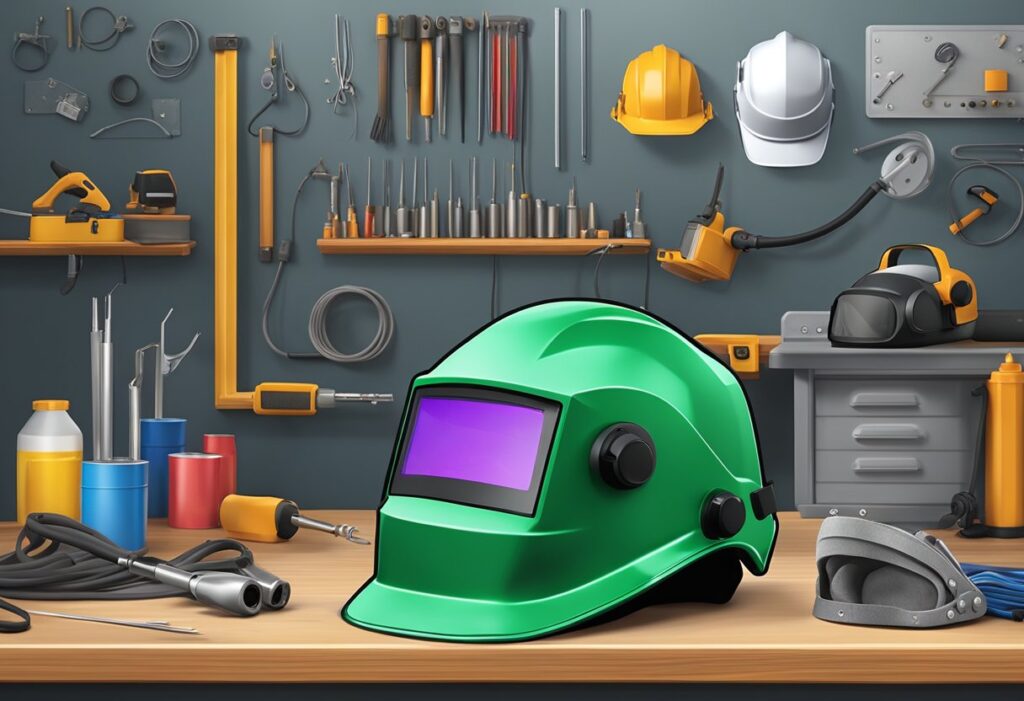
Welding helmets are essential protective equipment for welders. They protect the welder’s eyes, face, and neck from harmful UV rays and intense brightness produced during welding. Understanding the different types of welding helmets, key features to consider, and safety standards and certifications is crucial in selecting the fitting helmet.
Types Of Welding Helmets
Passive and auto-darkening welding helmets are the two most popular options. Passive helmets have a dark-tinted lens, typically shade #10. When the helmet is in the down position, the welder sees through the dark lens. The lens does not switch from a light state to a dark state automatically. On the other hand, auto-darkening helmets have a filter lens that darkens automatically upon contact with the welding arc. They are more convenient and provide better optical clarity, making them more popular among welders.
Key Features To Consider
When selecting a welding helmet, There are several important factors to think about:
- The helmet should provide adequate protection from harmful UV rays and intense brightness.
- It should be comfortable, lightweight, and well-ventilated to prevent heat buildup and reduce fatigue.
- It should have good optical clarity to ensure the welder can see the workpiece.
- It should have sensors that detect the welding arc and automatically darken the lens.
- It should have a long-lasting battery to power the auto-darkening feature.
Safety Standards And Certifications
Welding helmets must meet specific safety standards and certifications to ensure adequate protection for the welder. The most common safety standard for welding helmets is ANSI Z87.1, which sets minimum requirements for impact resistance, optical clarity, and other safety features. To ensure safety is not compromised, welding helmets should be certified through an authoritative testing body like the CEN or the Canadian Standards Association (CSA).
Understanding the different types of welding helmets, key features to consider, and safety standards and certifications is crucial when selecting the fitting helmet. Welders should prioritize protection, comfort, and optical clarity when choosing a helmet that meets their needs. This emphasis on safety and comfort will reassure you of your well-being and ensure a safe and productive work environment.
Top Welding Helmets
SAMIQU Welding Helmet
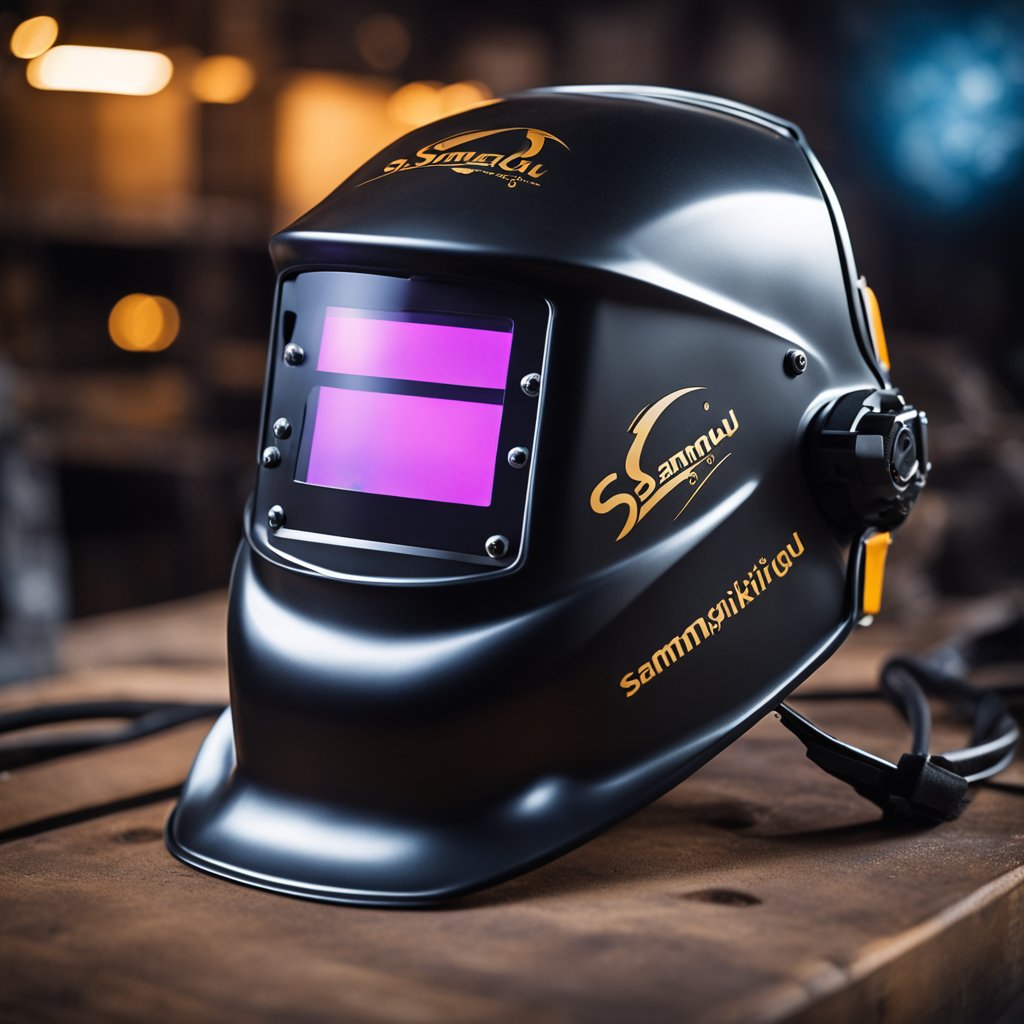
The SAMIQU welding helmet stands out with its detachable design, a unique feature that we found to be highly practical. The ability to separate the face shield from the goggles offers unparalleled flexibility, especially when adjusting for various tasks. This design makes it easy to transition between different types of work without any hassle.
Another highlight is the lightweight construction. We appreciate that it’s not heavy on our heads during extended welding sessions. The adjustable strap also helps ensure that it fits well, which is crucial for comfort.
However, only some things are perfect. Users often mention that the shade doesn’t darken enough for serious welding. This can be a dealbreaker for many, as adequate shading is vital for eye safety. We also noted some comments about the size; it may be too snug for those with larger heads. If you’re looking for a helmet mainly for welding, we suggest weighing these factors carefully.
Pros
- The detachable design makes it easy to use.
- Lightweight and comfortable for long periods.
- Anti-glare feature protects our eyes.
Cons
- Shade settings may not be sufficient for welding.
- Some users find it too small.
- Misleading claims about welding effectiveness.
TOPDC Auto Darkening Welding Helmet
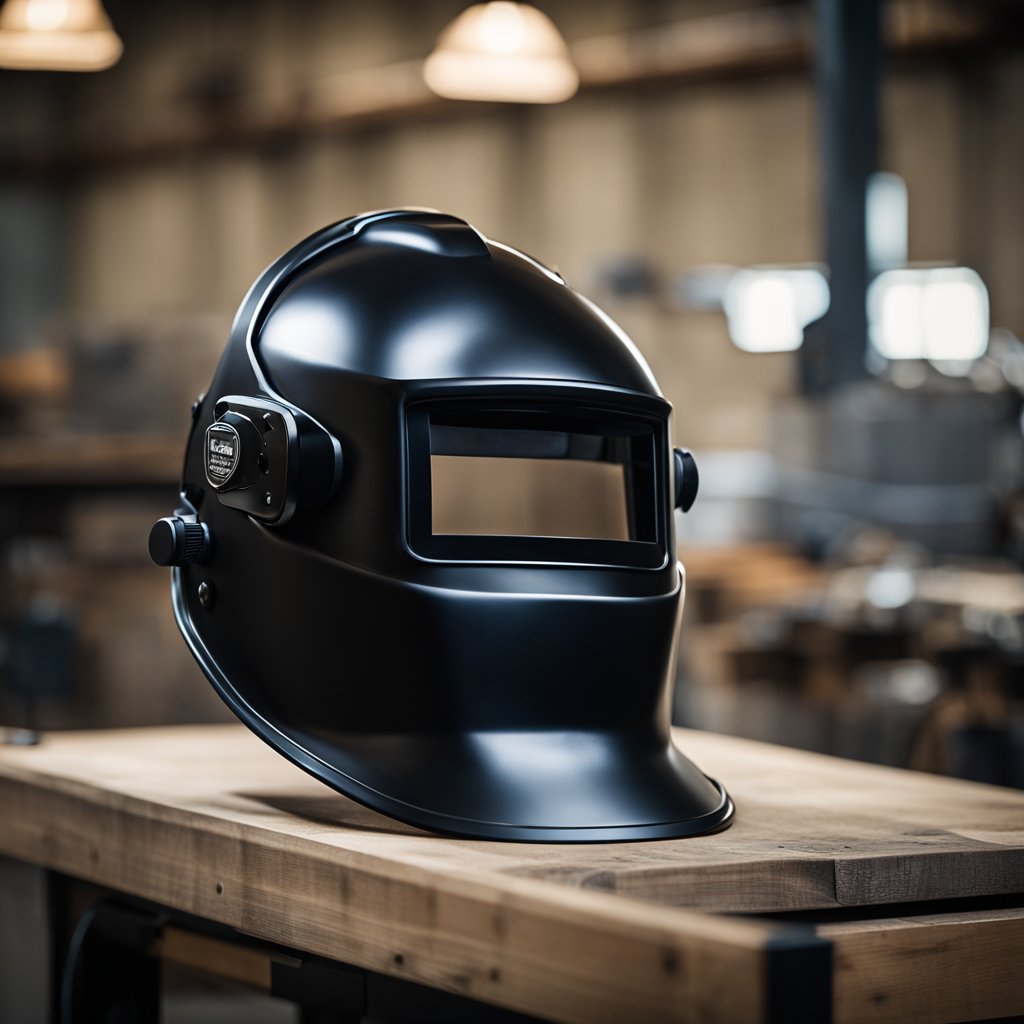
The TOPDC Auto Darkening Welding Helmet is a standout product that we recently tried and found to be highly effective for various welding tasks. The auto-darkening lens works swiftly, switching from light to dark in a fraction of a second. This feature significantly enhances our safety by protecting our eyes from harmful bright light while we work.
The large viewing area is impressive and significantly enhances our line of sight. We appreciate the True Color technology that gives us clear visibility without overly darkening our field of view. It helps us monitor our surroundings, which is crucial when welding.
The helmet is also lightweight and comfortable to wear for extended periods. With its adjustable headgear, we found it easy to find a snug fit. While we noticed that the build quality isn’t the strongest, it served us well for lighter projects. Overall, this helmet is an excellent blend of functionality and affordability for beginners and experienced welders.
Pros
- The quick auto-darkening feature improves safety.
- Large viewing screen enhances visibility.
- Its lightweight design makes it comfortable for extended use.
Cons
- Some parts feel less sturdy.
- Adjusting the sensitivity might require practice.
- Limited durability for heavy-duty use.
ARCCAPTAIN Welding Helmet
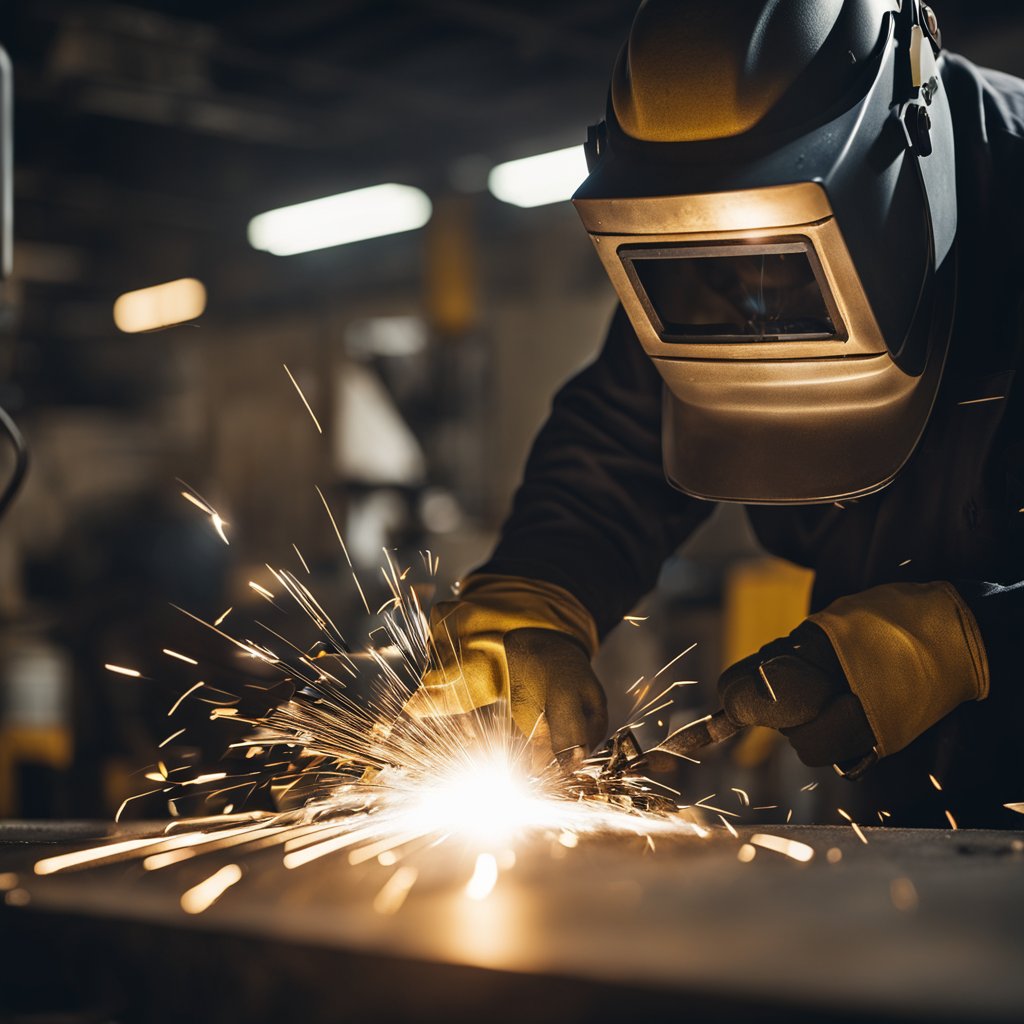
Using the ARCCAPTAIN welding helmet, we immediately noticed the clear view through the lens. The true-color technology provides a bright and vivid image, making it easy to see what we’re working on. The large viewing screen helps us keep track of our welding area without unnecessary strain.
The helmet also features a fast auto-darkening filter. We were impressed by how quickly it adjusts from light to dark, taking just 1/25000 of a second. This quick response helps us stay focused on the job without worrying about safety.
Comfort is a standout feature of the ARCCAPTAIN welding helmet. We appreciate how light it feels, weighing only 1 pound. The adjustable headgear allows for a customized fit, ensuring that it stays in place well and we can work for more extended periods without any discomfort.
Though we found a few minor complaints regarding the headband adjustment and sensitivity, the benefits far outweigh these drawbacks. The ARCCAPTAIN helmet proves to be a reliable tool, providing solid eye protection and a great visual experience while welding.
Pros
- Excellent visibility with precise lens technology.
- Lightweight design for extended wear.
- The fast auto-darkening feature adapts quickly.
Cons
- Some users may need help to adjust the headband.
- Occasional issues with sensitivity settings.
- Limited shade options may not suit all preferences.
Jecery Welding Helmet Cover
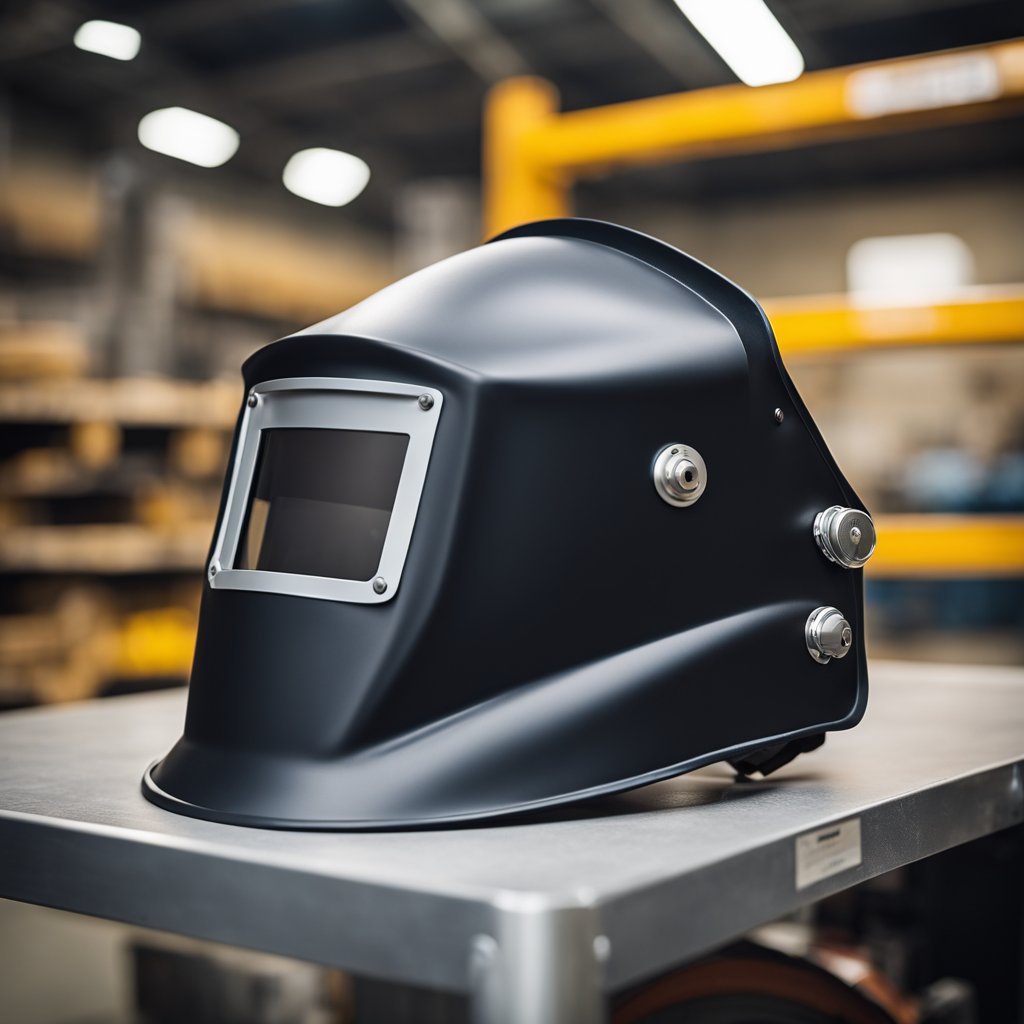
Using the Jecery Welding Helmet Cover has really changed our experience with welding. The flame-retardant cotton material feels sturdy, giving us peace of mind while working. The cover attaches securely to our helmets, providing excellent coverage for the head and neck areas.
The press fit seal makes installation straightforward, but getting it on can require some force. It fits snugly, which ensures it won’t shift during use. The material seemed like good quality and handled sparks well, so we felt safe while working.
One thing to keep in mind is the color. We thought it was black based on the images, but it turned out to be a navy blue. Despite this, the cover’s effectiveness has outweighed that small issue. Overall, we recommend this welding helmet cover for anyone in need of added safety gear.
Pros
- Provides full head and neck protection.
- Made from durable, flame-retardant materials.
- Fits well with most welding helmets.
Cons
- Installation can be snug, requiring some effort.
- Color may not match what some expect.
- Might be tricky to fit on certain helmet shapes.
TOPDC Welding Helmet
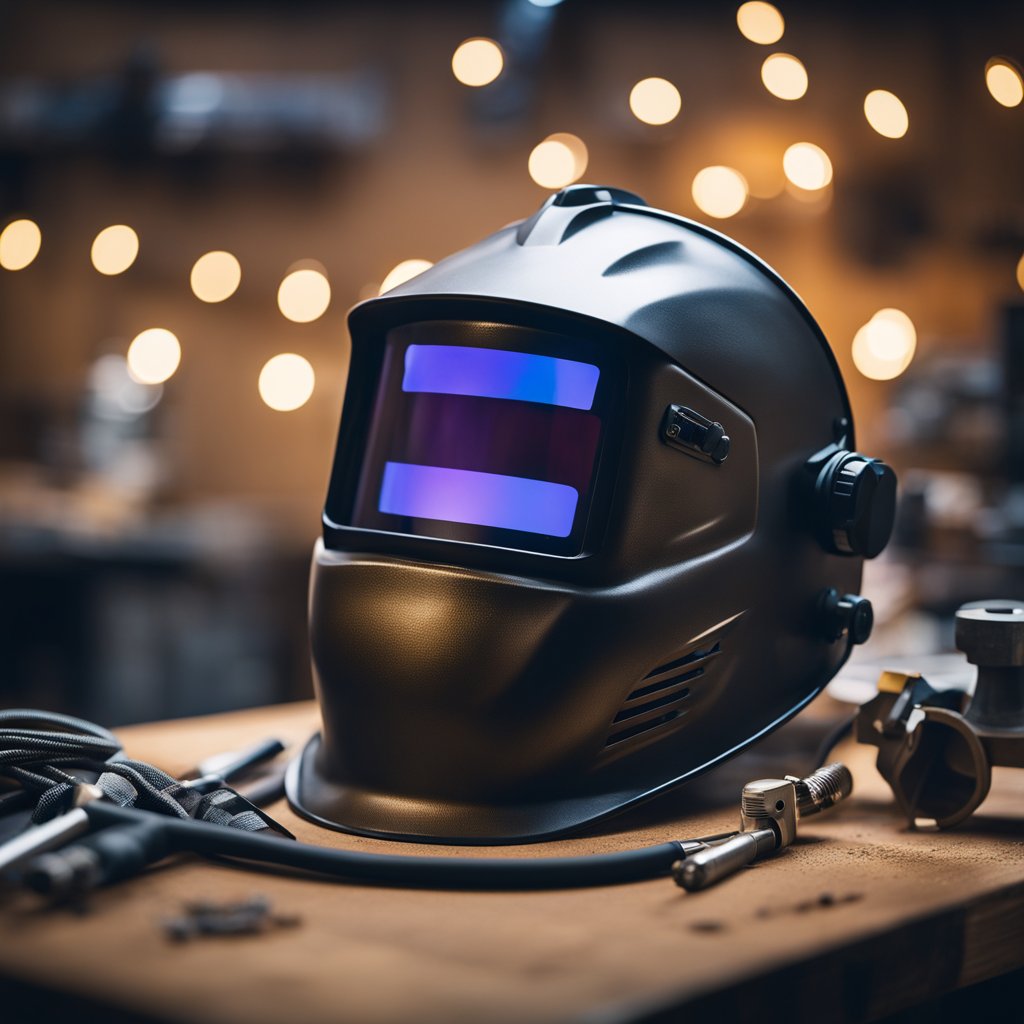
We found the large viewing area of 3.86 x 1.62 inches quite impressive. It lets us see everything we are working on without straining our eyes. The convenience of not having to adjust the shade manually is fantastic, especially when we switch between welding tasks and other jobs.
The last welding helmet we tried impressed us with its flip front feature. This practical design allows us to easily move the front up when we need to look at something without removing the entire helmet. It’s particularly handy during quick tasks and adds to the helmet’s versatility. Importantly, it’s suitable for various welding methods like TIG and MIG.
On the downside, the head strap material could be more comfortable, especially during long sessions. It functions fine, but we noticed some complaints about its durability. Some users have reported issues with assembly, hinting that we should be careful while setting it up. Despite these minor drawbacks, this helmet still offers good value for the price and solid protection for our welding needs.
Pros
- A large viewing area helps us see our work.
- The flip front design allows easy switching between filtered and clear vision for other tasks.
- Adjustable headgear provides a snug fit, accommodating different head sizes.
Cons
- Head straps could be more comfortable for extended use.
- Durability concerns with some components may affect long-term use.
- Some assembly issues reported might dissuade less experienced users.
“These are some of the best welding helmets available on the market today. Whether you are a professional welder or a hobbyist, there is a helmet out there that will suit your needs and budget.”
Advanced Features And Technologies
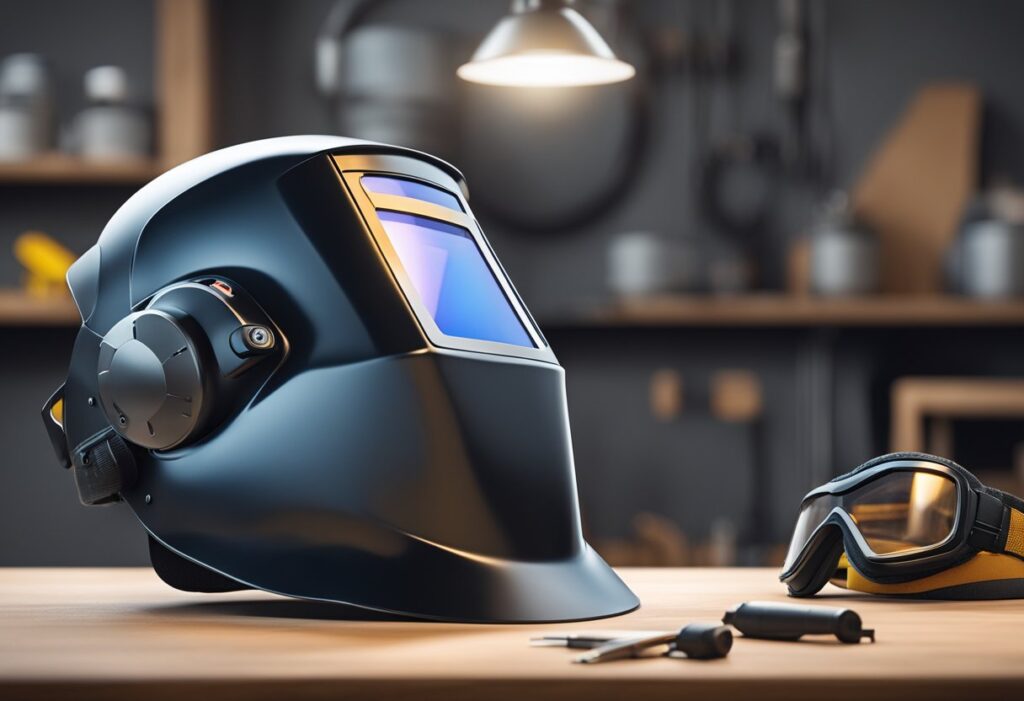
Auto-Darkening Technology
One of the most essential features of a welding helmet is its ability to darken when the arc triggers an immediate attack. This feature, known as auto-darkening technology, is now a standard feature on most modern welding helmets. With this technology, the helmet’s lens will automatically darken to a pre-set shade level, protecting the welder’s eyes from the intense light emitted by the welding arc.
Enhanced Visibility and Clarity
Another essential feature of a welding helmet is the clarity and visibility of the lens. Welding helmets with a larger viewing area and a higher optical class provide better visibility and clarity, allowing the welder to see the workpiece and the welding arc more clearly. Some helmets also feature digital controls for adjusting shade level and sensitivity, which can further enhance visibility and clarity.
Comfort and Ergonomics
Long periods spent wearing a welding helmet could be taxing on the body. Many manufacturers have developed helmets with improved headgear and ventilation systems to address this issue, providing better comfort and breathability. Some helmets also feature a harness system that distributes the helmet’s weight more evenly across the head and neck.
Overall, advanced features and technologies such as auto-darkening lenses, digital displays, and improved harness systems have made welding helmets more comfortable, efficient, and safe for welders. Some of the top welding helmets today, such as the 3M Speedglas 9100XXi, offer a range of advanced features and technologies, including replacement lenses, color accuracy, and sensitivity control, making them a popular choice among professional welders.
Practical Considerations For Welders
Selecting The Right Helmet For Your Welding Process
When selecting a welding helmet, welders should consider their specific welding process. For example, TIG welding produces less heat and sparks than other welding processes, so a helmet with a lower shade range may be more appropriate. Additionally, welders should consider the amp rating of their TIG welder when selecting a helmet. According to Proweldinghelmets.com, a TIG welder with an amp rating of 200 or less requires a helmet with a shade range of #9 to #13.
Another important consideration is the helmet’s weight and fit. Welders should select a helmet that fits securely and comfortably on their heads. A helmet that is too heavy or does not fit properly can cause neck strain and discomfort during long welding sessions.
Maintenance And Care Of Helmets
Proper maintenance and care of welding helmets ensures their longevity and effectiveness. Welders should regularly inspect their helmets for cracks, blemishes, and other indications of age and use. Additionally, after each use, they should clean their helmets to eliminate any residue or debris that may have settled within.
Adapting To Different Welding Environments
Welders may need to adapt their helmets to different welding environments. For example, a helmet with a smaller profile may be more appropriate when welding in a confined space. A helmet with a grinding mode feature can also be beneficial.
When selecting a helmet, welders should also consider the viewing screen. Helmets with larger viewing screens provide better visibility of the welding area but may be heavier and less comfortable. Welders should also check the helmet’s specifications to guarantee it is safe and offers sufficient protection from arc flash and ultraviolet radiation.
Overall, selecting the fitting welding helmet depends on various factors, including personal preference, the welding project, and the specific welding process used. Welders should consider their particular needs and consult a buyer’s guide to find the best helmet for the money. Popular options include the Lincoln 3350 and Antra welding helmets, which offer reliable performance and a range of features to meet different welding applications.
Making An Informed Purchase
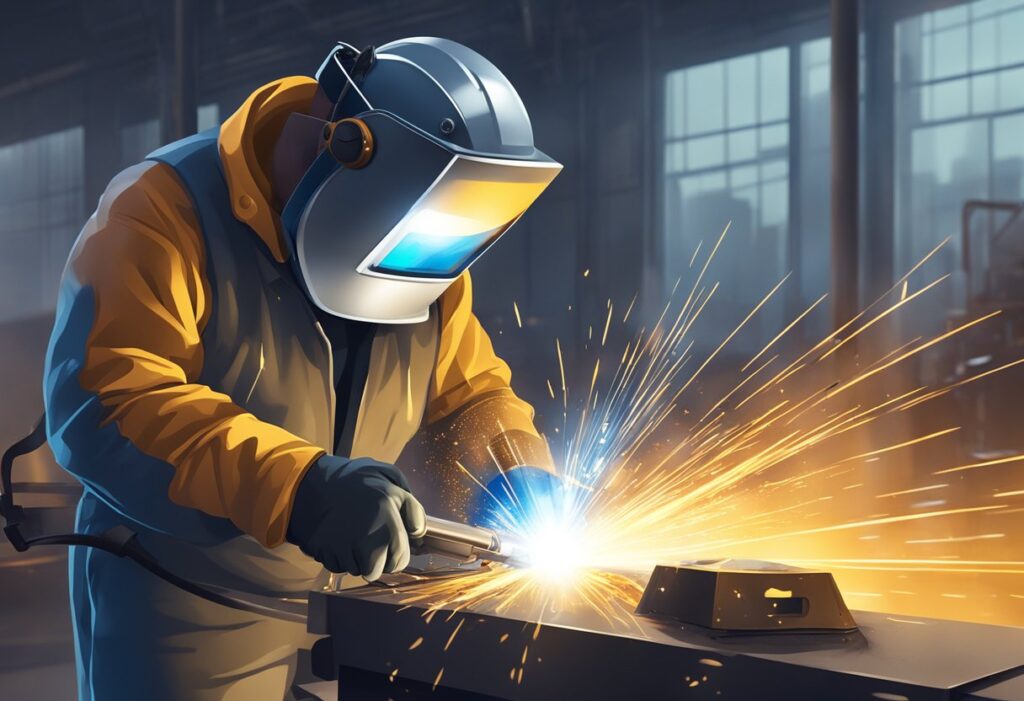
There are several things to consider while looking for a welding helmet to ensure you get the right one. Comparing prices and features, understanding the long-term value, and knowing where to buy welding helmets are crucial.
Comparing Prices And Features
Welding helmets come in various prices and features, and it is essential to compare them before purchasing. Some helmets may have replaceable batteries, a larger viewing size, or better construction quality, but they may also have a higher price tag. It is essential to weigh the benefits of these features against their cost to determine the best welding helmet for your needs.
Understanding The Long-Term Value
Shade selection is essential when considering the long-term value of a welding helmet, primarily if you frequently work in tight spaces. The Jackson Safety Insight, Lincoln Viking 3350, and Lincoln Electric K3034-4 Viking 3350 get excellent reviews for their shade and arc welding protection.
Where To Buy Welding Helmets
When it comes to where to buy welding helmets, there are several options available. Local welding supply stores, hardware stores, and online retailers offer various options. Researching the seller’s reputation and reading reviews is critical to ensure you buy from a trustworthy vendor.
Making an informed purchase when shopping for a welding helmet requires careful consideration of price, features, and long-term value. By comparing prices and features, understanding the long-term value, and knowing where to buy welding helmets, you can ensure that you are selecting the best welding helmet for your needs.
Frequently Asked Questions
What Features Should Beginners Look For In A Welding Helmet?
Beginner welders should look for welding helmets that are comfortable to wear, have a clear view of the welding area, and provide adequate protection. A lightweight helmet that is easy to adjust and fits securely is essential for comfort and safety. Additionally, beginners should look for helmets with a shade range of 9-13, protecting them from harmful UV and IR radiation.
How Do I Choose The Best Welding Helmet For Enhanced Visibility?
Welding helmets with auto-darkening lenses are the best option for enhanced visibility. These helmets use a light sensor to adjust the lens shade, adjusting the intensity of the welding arc and allowing for an unobstructed view of the job site. Helmets with a larger viewing area and high switching speed will enhance visibility.
Which Welding Helmets Are Advised For Usage By Professionals In The Year 2024?
In 2024, some of the top welding helmets recommended for professional use include the ESAB Sentinel A50, Lincoln Electric VIKING 3350, and Optrel Panoramaxx CLT. These helmets offer advanced features such as auto-darkening lenses, a wide viewing area, and a comfortable and durable design.
What Are The Advantages Of Auto-Darkening Welding Helmets?
Auto-darkening welding helmets have various benefits over their non-auto-darkening counterparts. They provide a clear view of the work area when not welding, which can increase productivity. Additionally, they eliminate the need to raise and lower the helmet, reducing neck strain constantly. Finally, they provide consistent protection from harmful radiation, which can improve welder safety.
How Does The Speedglas Welding Helmet Compare To Other Top Brands?
The Speedglas Welding Helmet is a top brand offering advanced features, including auto-darkening lenses, a wide viewing area, and a comfortable and durable design. While it is popular among welders, other top brands, such as ESAB, Lincoln Electric, and Optrel, offer similar or even more advanced features.
What Factors Should The Lincoln Welding Helmet That You’re Considering Buying?
When purchasing a Lincoln Welding Helmet, consider the helmet’s shade range, viewing area, and comfort. Additionally, consider the helmet’s durability and overall design. Lincoln Electric offers a range of welding helmets that cater to different needs and preferences, so pick one that prioritizes meeting your requirements.

